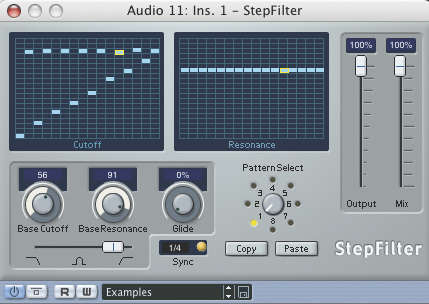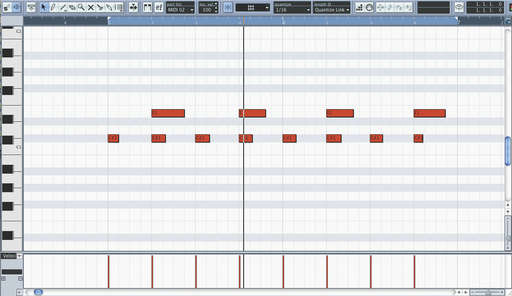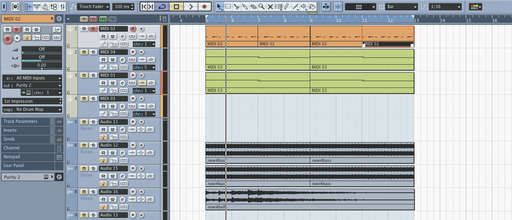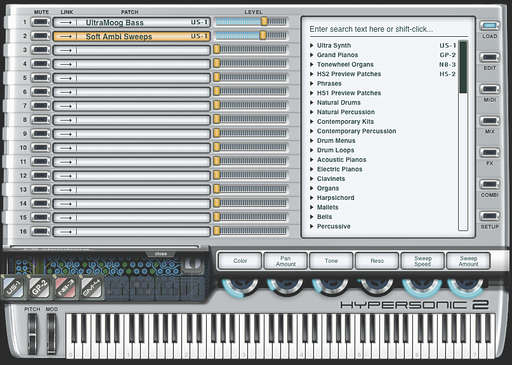26 trance tips
Whether you're brand new to trance production or looking for ways to break the mould, MusicRadar can give you a creative boost




Click here for all 'Production tips in every style' lessons
1. Learn the rules of trance - and then forget about them. On the face of it, it seems easy: if you follow the usual kick/ arpeggiation/sweeping synth/breakdown formula, you'll have a massive trance hit, right? No, you'll have a bog-standard trance track just like the other nine million (a conservative estimate) out there and you won't get noticed. A trance hit takes the production rules and messes with them to create something special. The standout tracks might follow the form for a while, but they hit home because they do the unexpected...
2. ...But what might the unexpected be? Well, that's ultimately up to you. The trance basics are straightforward enough but taking them to the next level requires inspiration. Sunlounger's White Sand uses a strumming guitar to great effect. Who'd have thought? The lesson here is: Don't be afraid to throw in some 'non-trance' sounds or ideas.
3. Atmosphere or impact?A few too many trance tunes start with huge atmospheric pad productions to help build expectation for when the inevitable kick comes in. That's all very nice and ethereal, but a hard production will lift a tune beyond this cliche. Just check the stripped back and huge bass/kick intro on Super8 & POS's excellent 5. But if you do like your atmosphere...
4. ...Then that's not a problem either. Trance seems to be one of the few remaining areas of music where raw synth sounds and simple melodies still work. Oh, and pads too; Armin van Buuren's DJ sets would be nowhere without them. Pads offer a lush counterpoint to the rigid and solid beats, thus enabling people in a trancelike state to discover new planes of existence (or whatever).
5. Bring pads to the fore with EQ and/or filtering. With the former, you have to be a bit delicate and experiment with boosting between 200Hz and 1kHz. With the latter, you can get busy and twist those filter knobs to your heart's content...
6. ...But bear in mind that you can over-filter elements within a trance tune. Eventually, frequencies will clash, so keep it for your main riffs, if possible, otherwise you'll end up with listeners reaching for the Anadin rather than the glo-sticks.
Get the MusicRadar Newsletter
Want all the hottest music and gear news, reviews, deals, features and more, direct to your inbox? Sign up here.
7. But what synths to try for those top trance tones? You might like to test out NI's Absynth, Rob Papen's Blue and Cakewalk's Dimension Pro for atmosphere, and good old Cakewalk Z3TA+ for some extra arpeggiated stuff. For the classic trance sound, dial in some saw waves - the more the merrier - and tweak the detune controls until you hit the spot. Add a cavernous reverb for that giant, epic sound.
8. Don't Overuse delay effects. The problem with a l lot of Trance we hear these days is that delays are used on too many elements, and this, combined with all of those cycling arpeggios, means repetition overload. Calm it down for a greater impact.
9. Change the key. It's a cliche of the highest order, but by God, it still works. Just after you've inflicted a few minutes of builds, falls, swirls and rises, raise or lower your repeated riff by, say, three or five semitones (and the rest of your melodic elements, obviously) and congratulate yourself on knowing what semitones actually are. It won't always work, but if it does, it's a new direction and journey for your blessed blissed-out chums to follow you on.
10. Kick, kick, kick, kick... You know the score by now. The kick is the lifeblood of trance. At one time it was weak, at another it was washed away by synths, but now it's hard, doubled up, often with a short slap delay, yet always high up in the mix and with a pinch of overdrive to make it as ballsy as you like.
11. Need more kick help? Well, compression (separate from the snare) is also a must, and the use of a derivative of the 909 kick is highly recommended (but please experiment, we implore you). Then there's the big, 'reverbed' kick - it's not used so much now, and it can overpower a mix, but there's always the occasional place for it - perhaps try it in a breakdown, where there's less going on anyway.
12. One last bit of kick advice: reducing the decay time will give you a much tighter beat, but be careful not to turn your kick into a blip or you'll lose that pounding effect. Also, as you reduce the decay, try adding the aforementioned slap delay to fill out the space - this trick is currently a hot favourite for a bit of added kick drama.
The arrangement
13. Did we say don't follow the rules? Well, there is one overriding principle of trance and that is that you can't fail with repetition. The genre relies on it - a trancelike state is induced by drugs (or so we hear) and repetition, simple as that. Crowds of tranced-up kids want repeated melodies, repeated arrangements and every tune needs a breakdown (see tip 16). However, like we said earlier, drop in a big surprise at the middle of the repetition and you'll have a rush-induced hit on your hands.
14. Repetition means looping, so you can probably blame trance for helping to create so many loop-based pieces of software. Looping is the very thing that, to fans of the genre, makes trance, but is precisely what the non-believers hate. We'll assume you're a fan if you're reading this, so work in blocks of 16 bars, layer everything up, experiment with dropping sections in and out, and your arrangement will eventually come together...
15. ...But don't leave it there! An arrangement with simple drops, mutes and builds does not necessarily make a good trance tune. The incidental effects, like timestretched vocals, piano riffs and sweeping filters, add impact and give your tune character.
16. The breakdown is one thing that you simply have to include. Traditionally, it's the section where you lose pretty much everything apart from a few string sounds and effects and maybe some kind of sultry vocal. The arrangement then teases the listener by introducing new or old bits at the start of every couple of bars (or get crazy and do it half-way through one!) and then, through a series of machine-gun snares (yes, they're still very much de rigeur), frantic leads and a positively D-Day-like panic attack of audio nonsense before the kick drum breezes back in, leads everyone in the room to serotonin overload. And this is a good thing. But there is another way...
17. The alternative breakdown is still a breakdown by all accounts; it just breaks things down by losing non-traditional elements. Leave the kick and some of the bassier elements and bring other big bass sounds in to replace your leads.
Drums and bass
18. Effect that snare! Experimenting here with reverb and phasing effects, as the snare/clap is an important but often overlooked element and can, with the right use of effects, add a completely new character to a tune.
19. The snare or clap (either will do) comes in on the second and fourth kick. That's the rule. But remember what we said about rules back in tip 1! OK, you can try and experiment a bit with it to make yourself feel better, and throw in a few variations along the way, but then, like practically every other trance producer out there, you'll end up coming back to the standard, tried-and-tested rhythm. It's inevitable, you know.
20. You know Kylie's Can't Get You Out Of My Head? The bassline? Can't get it out of your head now? Good, because tons of trance tunes rely on putting their bass notes in exactly the same place: slap-bang between the kicks. It's lazy, it's predictable, it's soooo late last century - but it's also terrific, satisfying and downright easy. Yes, by all means experiment (maaan) with rolling reggae basslines if you like, but, as with the snare, you'll end up coming full circle and back to the winning formula at some point, so why bother resisting?
21. How you treat your bass is as important as how you treat your kick. Use a low-pass filter on the bassline to avoid any clashes with the midrange of the kick. You can also strengthen the bassline with compression or by using a sub-bass sine wave with a short attack and quick release time.
22. Too many percussive elements can ruin a trance track. A simple beat often works best, especially in places where things are really hotting up with a lot of melodic bass and lead action, and you might want to really strip the beat down in those parts.
Other sounds
23. Layering loops is obviously one of the mainstays of trance, gradually building a track until it reaches that hands-in-the-air breakdown. Introduce each layer with an incidental effect like an off-beat snare, the (now cliched) reverse crash cymbal or, as Aksun does so well on Arisen, a break that gradually filters down, with the impact falling on the first beat of the next bar.
24. Doing a trance remix with just one vocal line? Chop it up and timestretch the last few words more and more, then line them up with the kick to get a laboured but powerful incidental effect to introduce your next layered section.
25. Stuck for a lead sound to carry your main riff? Hunted through loads of stabs and searing synths but to no avail? Use a piano! It's been all over trance ever since Robert Miles introduced it, but, amazingly, it still works a treat. And with all sorts of plug-ins, like Steinberg's Hypersonic and Luxonix's Purity, offering a gazillion piano sounds, you can give them a go too. Be sure to add delays, reverb and natural-sounding arpeggios, though.
26. In euphoric trance, filtered leads take the, er, lead over basslines to help build tension and excitement. Where once a resonating bassline might have offered the key rush, it's now an arpeggiated lead, stab or even a pad. No doubt opening and closing your filter and resonance controls will have a corresponding effect on your listeners' pupils.
MusicRadar is the number one website for music-makers of all kinds, be they guitarists, drummers, keyboard players, DJs or producers...
- GEAR: We help musicians find the best gear with top-ranking gear round-ups and high-quality, authoritative reviews by a wide team of highly experienced experts.
- TIPS: We also provide tuition, from bite-sized tips to advanced work-outs and guidance from recognised musicians and stars.
- STARS: We talk to musicians and stars about their creative processes, and the nuts and bolts of their gear and technique. We give fans an insight into the craft of music-making that no other music website can.










